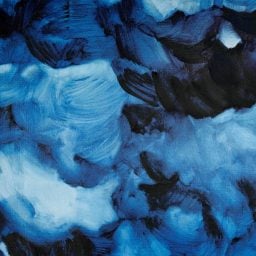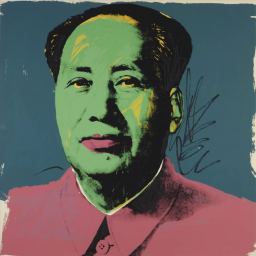Artnet’s current auction, Signature Works, features career-defining photographs by influential and daring creators, spanning from classic shots by Helmut Newton to Zanele Muholi’s bold, contemporary work.
The sale also features iconic photographs that originate from the commercial photography industry, including images by Horst P. Horst, Annie Leibovitz, and Steve McCurry that were originally produced for print publications. We spoke to Artnet’s Head of Photographs, Susanna Wenniger, about how these works represent profound artistic accomplishments while simultaneously satisfying a commercial practice—as well as contributed to artists’ long-standing fight for photography to be considered fine art, which has been ongoing since the medium’s inception in the early 1800s.
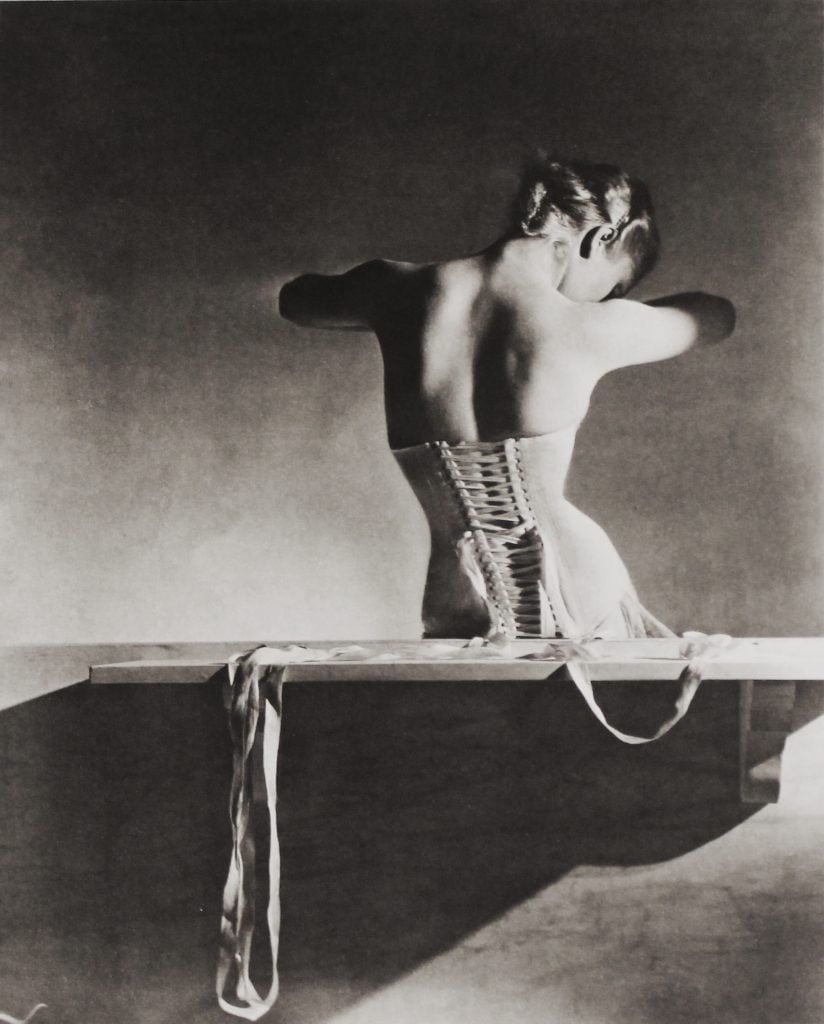
Horst P. Horst, Mainbocher Corset (1939). Est. $30,000–$50,000.
One of the earliest and most important fashion photographers in history, Horst P. Horst created distinctly modern photographs that drew inspiration from the Surrealist movement. Mainbocher Corset (1939) is Horst’s most famous work, and it was the last photograph he took in Paris before World War II. Seen from the waist up and obscured in dramatic shadow, Horst’s model resembles a classical sculpture.
The image was initially published in French Vogue in December 1939. There are two versions of the image: one with a loosened corset and the other tightened. The latter is shown here and was the version that appeared in Vogue, as the original image with the loose corset was deemed too provocative for the time. The print in our sale is a rare, large platinum palladium print from a small edition of 10. It stands out as one of the most important fashion images ever made, and it is even directly referenced in Madonna’s 1990 music video for her song Vogue.
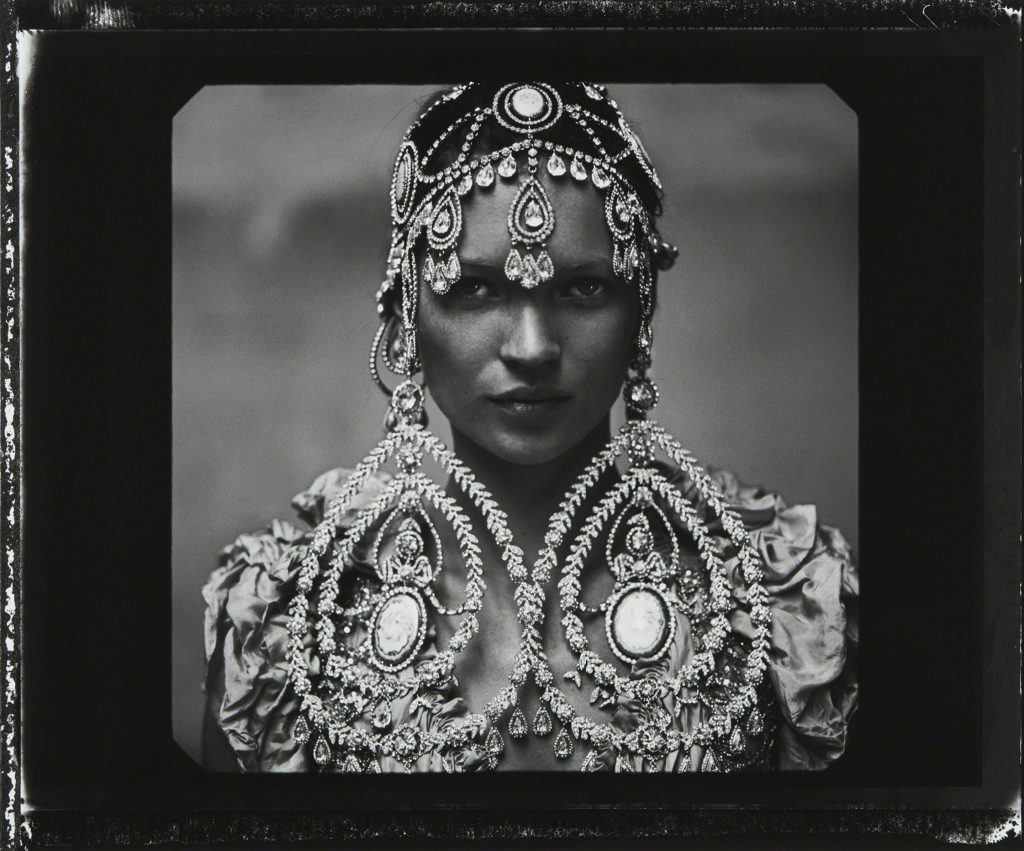
Annie Leibovitz, Kate Moss (1999). Est. $20,000–$30,000.
As her first foray into photographing high fashion, Annie Leibovitz was approached by Anna Wintour in 1998 to shoot a spread for American Vogue on Sean Combs—then known as Puff Daddy—and Kate Moss in Paris. “I could never be a bona fide fashion photographer,” stated Leibovitz in an interview with the New York Times. Rather, through her elaborate costumes and set designs, Leibovitz considers herself a “conceptual artist using photography.”
Leibovitz captured this image of Moss wearing an intricate headdress from fall 1999 Christian Dior couture that appropriated designs from the Hindu god Vishnu. While the accompanying article in Vogue focuses on Puff Daddy’s taste for all things luxury, this arresting image of Moss stands out as the artistic highlight of the shoot. Moss dons bejeweled earrings and a head covering while staring powerfully at the lens. A decade after its initial publication, this timeless image was jointly selected by Moss and James Danziger for the Kate Moss Portfolio, published in an edition of 30.
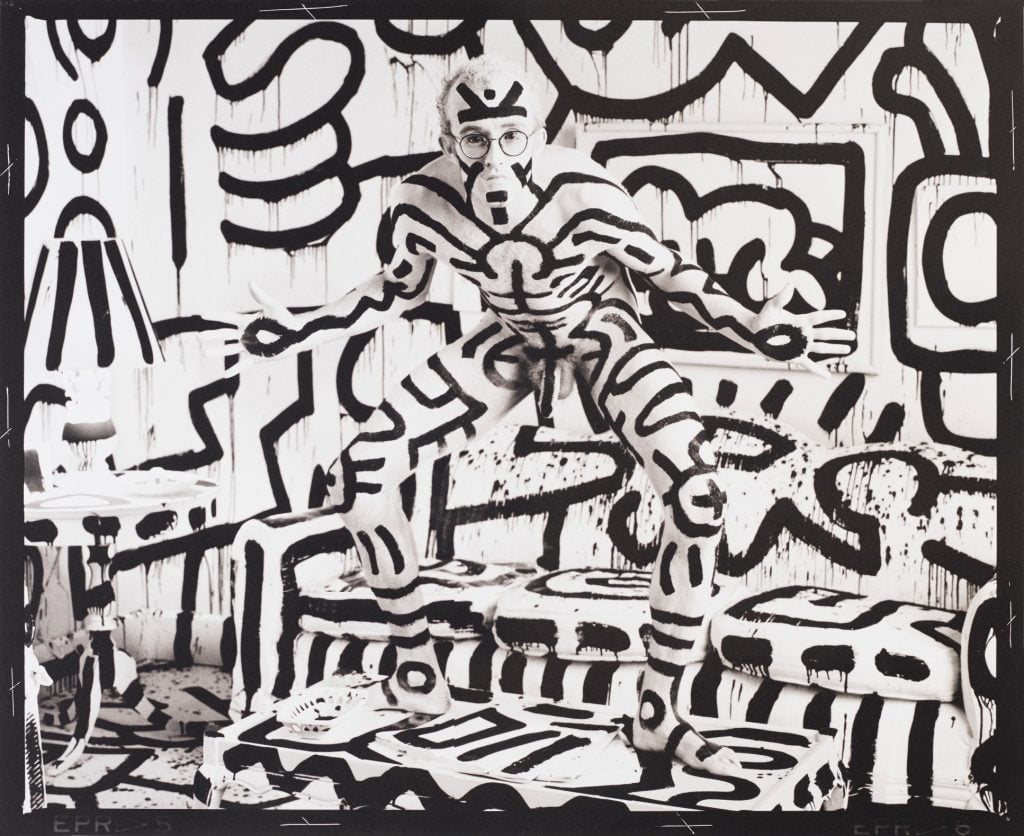
Annie Leibovitz, Keith Haring, New York (1986). Est. $40,000–$60,000.
Annie Leibovitz’s practice as a self-described conceptual artist is epitomized through her unconventional photographs of fellow artists, such as her iconic celebration of Keith Haring, pictured here. Leibovitz was commissioned by a Floridian magazine to capture images of the pioneering artist Keith Haring in 1986. Although the images were not published, since the magazine folded shortly after, the collaboration between Haring and Leibovitz is a testament to the important relationship between editorial and fine art. Once Leibovitz provided an all-white living room of thrifted furniture, Haring painted an array of black graffiti in his characteristic style all over the walls, sofa, and finally himself. His first time painting his body, Haring initially whitewashed just his torso. “When he came out of the dressing room he was wearing white painters’ pants,” stated Leibovitz, “but it just seemed obvious to both of us at that point that he should paint the rest of him.” Although initially intended for commercial purposes, Leibovitz’s image is a powerful conceptual portrait of one of the most important 20th-century artists, and offers lasting insight into both Haring’s and Leibovitz’s minds as creators.
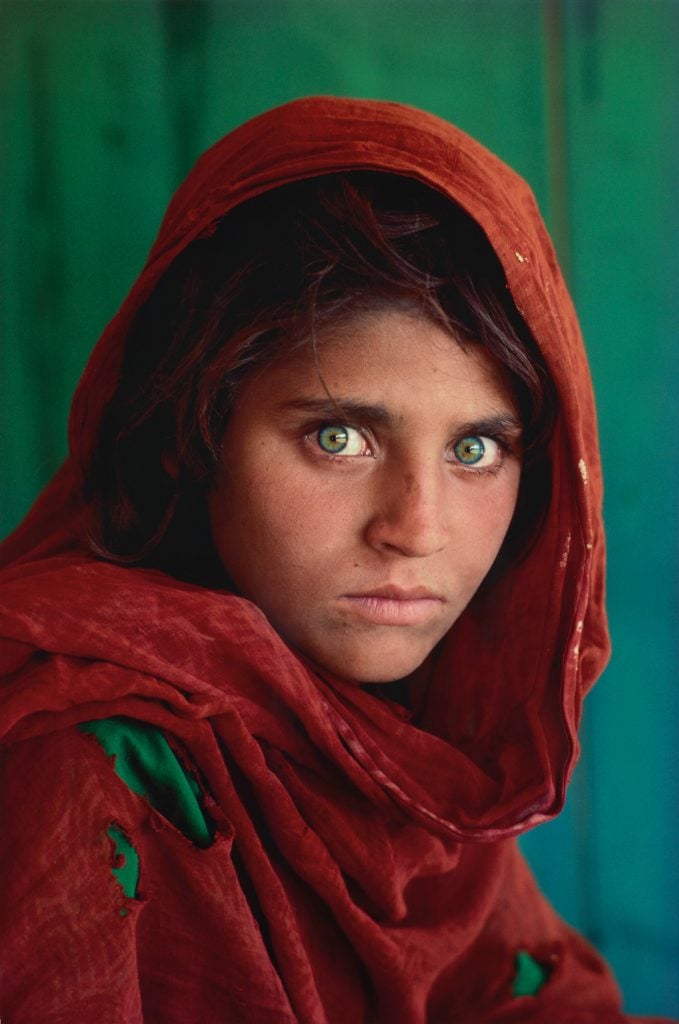
Steve McCurry, Sharbat Gula, Afghan Girl, Pakistan (1984). Est. $12,000–$18,000.
One of the most immediately recognizable photographic portraits of all time, Steve McCurry captured this mesmerizing shot while on assignment in Afghanistan for National Geographic. Much like how Dorothea Lange’s Migrant Mother humanized the Great Depression, McCurry’s image offered an important representation of the toll on humanity caused by the conflict in Afghanistan.
McCurry’s image, which appeared on the June 1985 cover of the magazine, has a Mona Lisa-esque intensity created by the young girl’s piercing green eyes. This image is a powerful example of how a photographic image can initially serve a functional purpose but then transcend its original intentions.
Signature Works is now open for bidding on Artnet until May 24. Browse the sale and place your bids.








